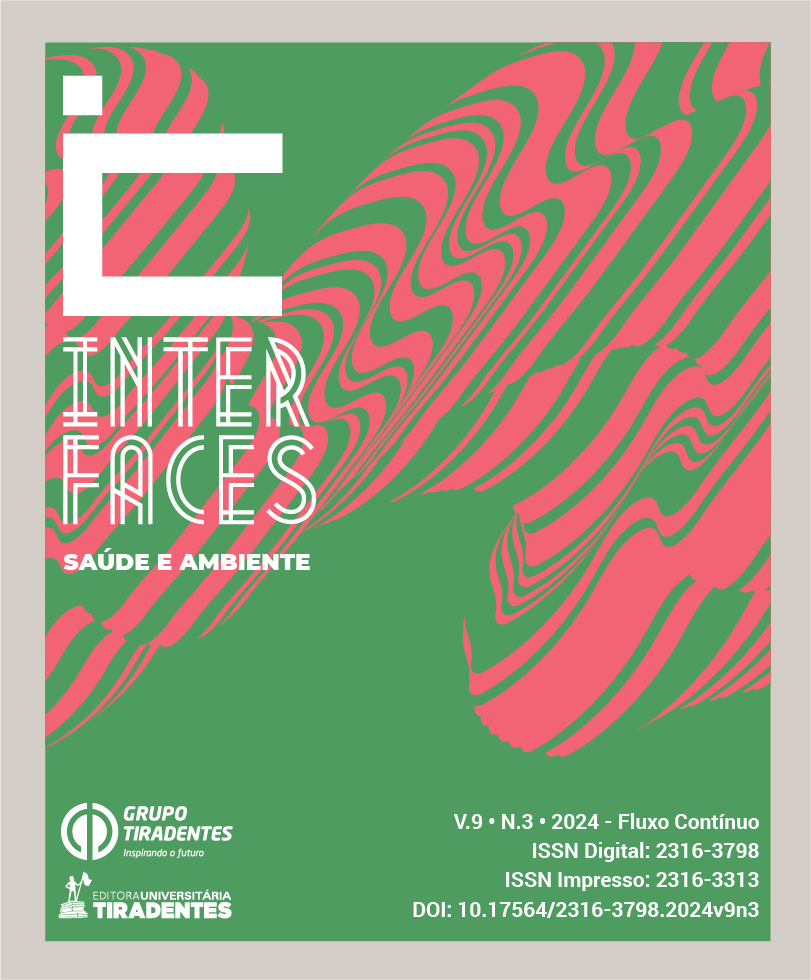ALTERAÇÕES HEMATOLÓGICAS E BIOQUÍMICAS EM INDIVÍDUOS EXPOSTOS A AGROTÓXICOS: IMPACTO DA EXPOSIÇÃO DIRETA VERSUS INDIRETA
ALTERACIONES HEMATOLÓGICAS Y BIOQUÍMICAS EN INDIVIDUOS EXPUESTOS A PESTICIDAS: IMPACTO DE LA EXPOSICIÓN DIRECTA VERSUS INDIRECTA
DOI:
https://doi.org/10.17564/2316-3798.2024v9n3p553-570Published
Downloads
Downloads
Issue
Section
License
Copyright (c) 2024 Interfaces Científicas - Saúde e Ambiente

This work is licensed under a Creative Commons Attribution-NonCommercial 4.0 International License.
Autores que publicam nesta revista concordam com os seguintes termos:
a. Autores mantêm os direitos autorais e concedem à revista o direito de primeira publicação, com o trabalho simultaneamente licenciado sob a Licença Creative Commons Attribution que permite o compartilhamento do trabalho com reconhecimento da autoria e publicação inicial nesta revista.
b. Autores têm permissão e são estimulados a distribuir seu trabalho on-line (ex.: em repositórios institucionais ou na sua página pessoal), já que isso pode gerar aumento o impacto e a citação do trabalho publicado (Veja O Efeito do Acesso Livre).
Abstract
It is known that individuals directly exposed to pesticides are more susceptible to changes in hematological and biochemical parameters. However, there are no studies comparing the effects of direct and indirect exposure to pesticides on such parameters. This study aimed to verify if individuals indirectly, but still massively exposed to pesticides due to residing or working in agricultural areas with intense pesticide application, exhibit hematological and biochemical alterations. Analyses were conducted on 62 individuals exposed to pesticides residing in a municipality located in the Midwest region of Brazil, with half of them being rural workers directly exposed (occupationally) and the remaining indirectly exposed. Besides hematological and biochemical parameters, sociodemographic, clinical, and occupational parameters were analyzed to discard biases in the study. No significant differences were found regarding the type of exposure in hematological parameters. However, in biochemical parameters, individuals directly exposed to pesticides showed a higher frequency of altered levels of cholinesterase, as well as higher levels of AST, ALT, and GGT compared to those indirectly exposed to pesticides (p<0.05), the latter also in relation to normality parameters. Total cholesterol, VLDL, and triglycerides were significantly elevated in both groups, possibly due to the overweight of the participants. Therefore, this study showed that individuals indirectly exposed to pesticides, although considerably exposed to large quantities of pesticides daily, undergo fewer biochemical alterations than workers directly exposed. However, these results do not exclude the need for monitoring these individuals, nor the possibility of alterations due to indirect pesticide exposure. Further studies involving comparison between rural populations exposed directly and indirectly to pesticides should be conducted in other populations, as exposure profiles may differ from each location due to differences in pesticide loads and application frequencies employed.




















